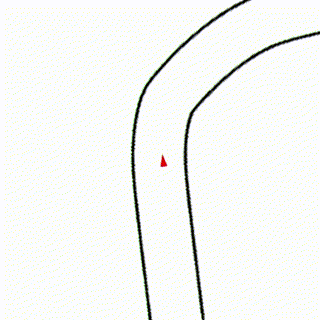Final project for CSE 579: Intelligent Control Through Learning And Optimization, by Abhay Deshpande and Arnav Thareja.
This project uses deep reenforcement learning to race 1/10th-scale F1 cars in simulation. The full project report is attached here. The trained agents succesfully learned to race competitively.
Interestingly, the agent was trained on COTA (left) and was able to transfer to new tracks, such as Interlagos (right).
Clone repo, initializing submodules:
git clone --recurse-submodules https://github.com/abhaybd/F1-RL.git
cd F1-RLCreate environment
conda env create -f env.yaml
conda activate f1-rlNow install f1tenth gym, which has been included as a submodule.
cd f1tenth_gym
pip install -e .Train jobs are parameterized by a config file, an example of which is provided. You can train a model using:
python -m f1rl.train <config_path>Train jobs are logged with wandb, so you can set that up or run jobs offline, in which case tensorboard can be used to view the logs.
After training a model, you can evaluate models using:
python -m f1rl.eval <run_path> <checkpoint_name>To download a model that was saved with wandb, run_path should be the run path, in the form entity/project/run. To run a local model, it should be the path to the run files, and the --local flag should be specified. Use the --help flag to see a full list of options.
After saving an eval trajectory with the -s flag, you can render the trajectory as an image or video. To render it as an image run:
python -m f1rl.render_recording <recording_path>And to render a video run:
python -m f1rl.render_recording_vid <recording_path> <vid_save_path>
